A 2.6. Variations in thickness
A 2 damage subcategories:
A 2.1. Holes
A 2.2. Hair remains
A 2.3. Striations
A 2.4. Traces of jagged action
A 2.5. Veining, vein evidence, drainage of blood vessels
A 2.6. Variation in thickness
A 2.7. Opacity, transparency
A 2.8. Splitting
A 2.9. Variation in colour or surface appearance, matte, semi-matte, glossy
A 2.10. Presence of grain layer
The signs of the skin’s quality that mostly depend on the age of the animal.
It is easier to produce thin, ca 0.1 mm and thinner, parchment of uniform thickness if the skin of a young animal is selected for processing. The processing of both sides of an older animal’s skin in order to thin it requires much more effort, and is often unsuccessful. The damage and uneven thickness of the base material of historical parchments is usually caused by the mechanical processing and stretching during thinning of the skin. Parchment with variations in its thickness may later become quite stiff. Great differences in the thickness may result in the deformation of the parchment caused by the external environment.

Ürik TLA.230.1-iiib.25, 1482. a.
Paksuse kõikumine.
Pärgamendi valmistamisel saavutatud paksuse ühtlus üle pinna on pärgamendi valmistamise kvaliteedi tunnuseks. Lisaks paksuse mõõtmisele saab ka läbivas valguses paksuse ühtlust või ebaühtlust dokumenteerida.
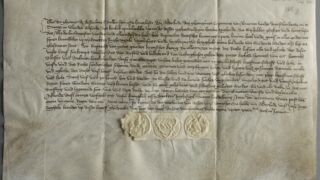
Ürik TLA.230.1.be_14/ii, 1561.a.
Paksuse kõikumine.
Paksuse suur ebaühtlus üle pärgamendi pinna võib põhjustada ajaloolistel pärgamentidel deformatsiooni. Deformatsioon pärgamendi servades on dokumenteeritud kaldvalguses.
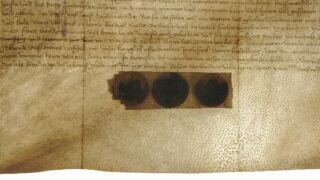
Ürik TLA.230.1.be_14/ii, 1561.a.
Paksuse kõikumine.
Deformeerunud alade erinev paksus on hästi nähtav läbivas valguses.
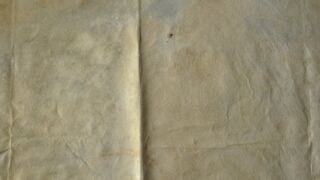
TLA.230.1.BB_74/iv
Paksuse kõikumine.
Paksuse lokaalne ebaühtlus, mis on põhjustatud pindmise ala ebaühtlasest eemaldamisest.

Ürik TLA.230.1-ii.255, 1509. a.
Paksuse kõikumine.
Ühtlane paksus on dokumenteeritud läbivas valguses.

Ürik TLA.230.1-ii.255, 1509. a.
Paksuse kõikumine.
Paremal ülemises nurgas on pärgamendi paksus ligi 4 korda paksem pärgamendi keskmisest paksusest. Paksuse kõikumine ja degradeerumine on põhjustanud pärgamendi deformatsiooni.

Ürik TLA.230.1-i.1211/a, 1725. a.
Paksuse kõikumine.
Ühtlane paksus on dokumenteeritud läbivas valguses.
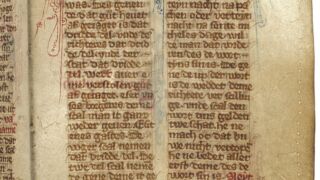
Ürik TLA.230.1.cm10, 1433. a.
Paksuse kõikumine.
Pärgamendilehe ühtlane paksus on pärgamendi valmistamise kvaliteedi tunnuseks. Dokumenteeritud läbivas valguses.

Ürik AM.115.3.41, 1803. a.
Paksuse kõikumine.
Läbivas valguses dokumenteeritud ebaühtlase paksusega pärgament.
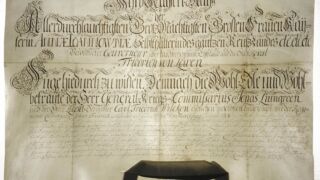
Ürik AM.115.2.21, 1733. a.
Paksuse kõikumine.
Suureformaadilise pärgamentdokumendi ühtlane paksus on dokumenteeritud läbivas valguses.

Ürik AM.115.2.1, 1647. a.
Rooste. Rebaseplekk e. foksing
Rebaseplekid läbivas valguses. Plekid on väikese läbimõõduga, sageli kogumitena esinevad, punakaspruunid plekid, mille tekkepõhjuseks peetakse metalliühendite, bioloogiliste mõjutuste ja loomse pigmendi, melanin, koosmõju.
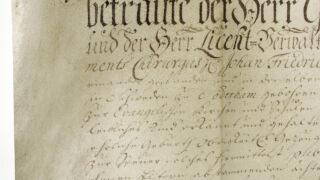
Ürik AM.115.2.21, 1733. a.
Paksuse kõikumine.
Ühtlane paksus on dokumenteeritud läbivas valguses.
